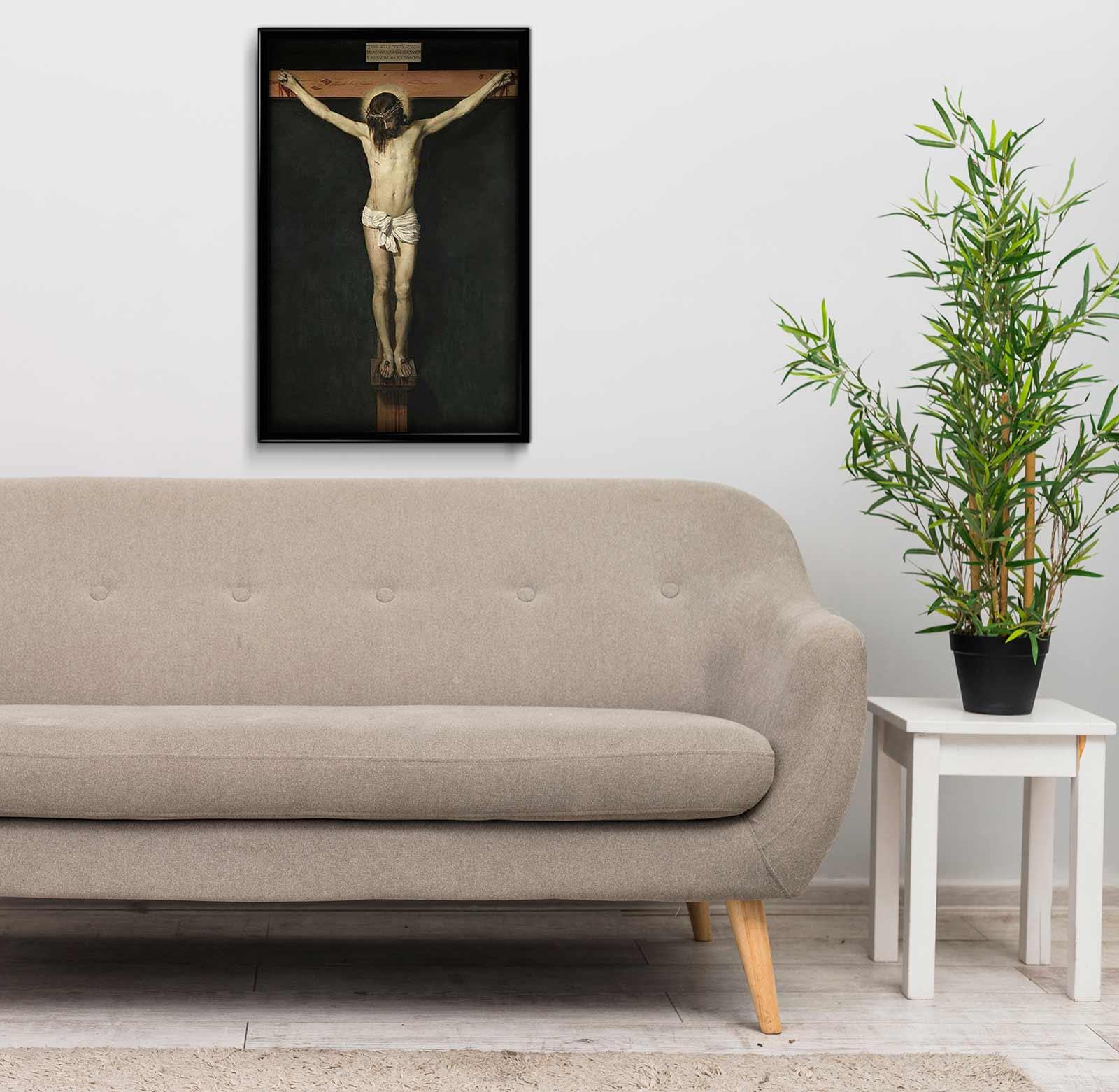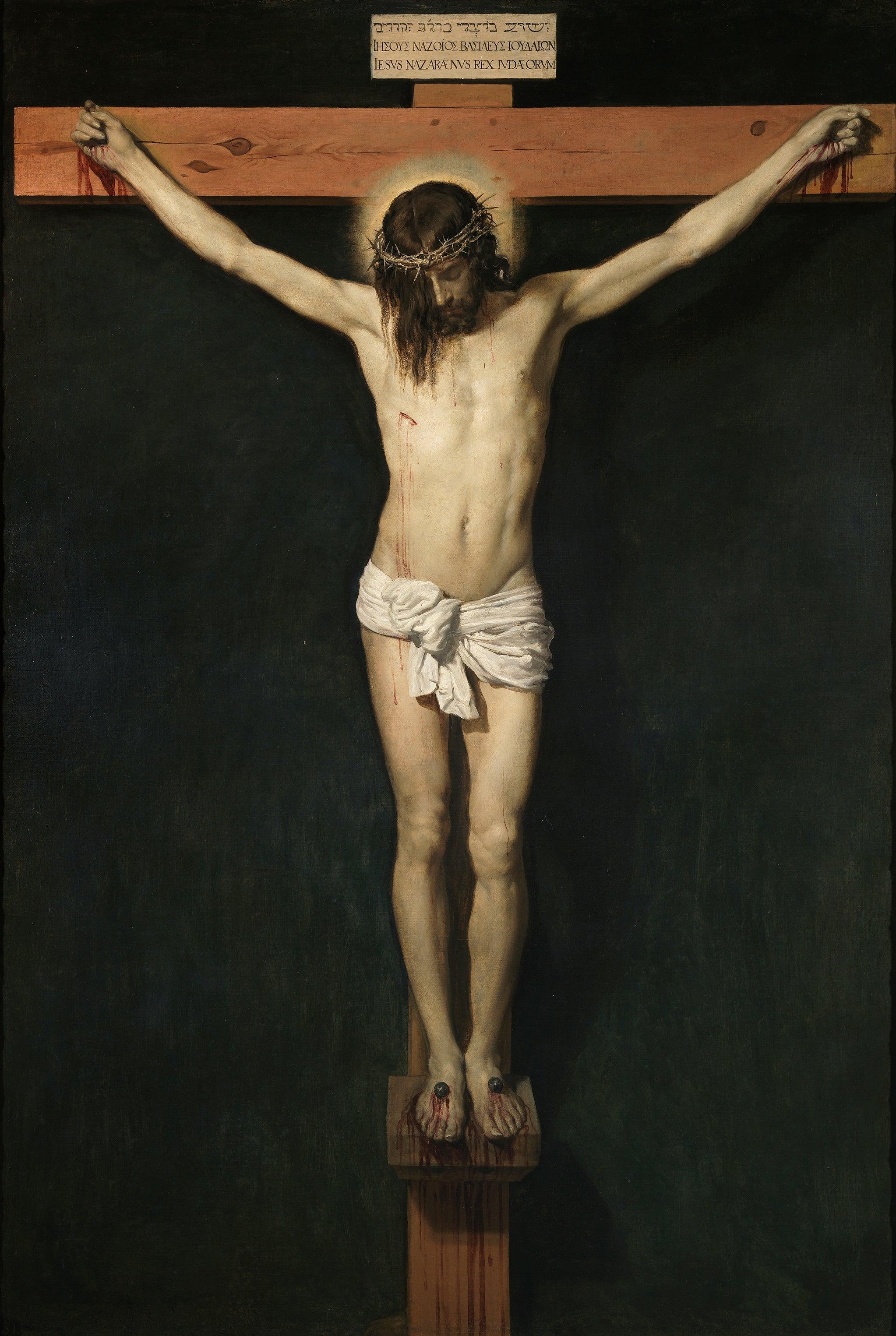Description
This intensely powerful image of Jesus on the cross was painted during the creative period that followed Velázquez's first stimulating trip to Italy. Unlike his other male nudes that appeared in such paintings as the Apollo in the Forge of Vulcan and the Robe of Joseph, his Christ on the Cross is a dead or dying body. which is not accompanied by other narrative elements except for the cross itself. However, the artist manages to endow the work with great dignity and serenity.
The work is believed to have been commissioned for the sacristy of the Convent of San Placido, the austere posture of the crucified Christ features four nails, the feet together and apparently supported by a small wooden shelf, which allows the arms to form a subtle curve. , instead of a triangle. The head is crowned by a halo, while the face rests on the chest, giving us a glimpse of its features. His straight, limp hair hangs over the right side of his face, its trailing back traced by blood dripping from the wound on his right side.
The image is unusually autobiographical in that it illustrates all the major influences on Velázquez's painting. For starters, he recalls the devotional tone and iconography of the paintings absorbed during his early years in Seville under Francisco Pacheco, an active member of the Spanish Inquisition.
Second, it reflects his skill in figure painting acquired in Spain from the study of Spanish Renaissance artists and, in Italy, from the art of classical antiquity, from High Renaissance art in Rome and Venice, and from the works by Caravaggio in Rome and Naples.
The influence of classicism on the work is shown in the general calmness of the body and its idealized posture. The influence of Caravaggism is evident in the dramatic tenebrism that focuses all attention on the pale body of Christ.
It is true that the image does not have the characteristic drama of baroque painting, which is seen in religious works such as The Crucifixion of Saint Peter or The Descent from the Cross . Instead, it possesses a monumental sculptural quality that elevates it, in keeping with the spirituality of the subject. The composition is starkly simple but with a vivid contrast between the white body and the dark background, and there is naturalism in the way Christ's head falls on his chest. The matted hair is painted with the ease that Velázquez had seen and admired firsthand in examples of Venetian painting.
Velázquez earned a reputation as one of the best portrait painters in Spain, becoming the official painter of Philip IV (reigned 1621-1640) and ultimately the greatest representative of Spanish painting of the Baroque period. However, despite the fact that religious art was especially important in Spain, a country whose ruling monarchy prided itself on being one of the main patrons of Catholic Counter-Reformation art, Velázquez painted comparatively few notable religious paintings.
Instead, the artist painted the world he saw around him, specializing in portraiture, some genre painting (still life), and the occasional history painting. Ironically, given the scarcity of his religious works, he was most influenced by the Italian genius Caravaggio, who is noted above all for his biblical art, executed in an aggressively realistic style. Velázquez was also strongly influenced by the ideas of the Italian Renaissance obtained from his Sevillian teacher Francisco Pacheco.





